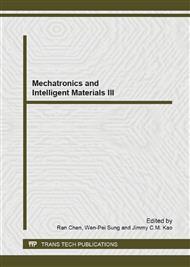p.985
p.990
p.995
p.1000
p.1008
p.1012
p.1016
p.1025
p.1029
SnO2 Nanofibers Gas Sensor Detecting H2 Dissolved in Transformer Oil
Abstract:
Hydrogen is an effective fault gas dissolved in transformer oil, and online monitoring its concentration has important meaning on condition assessment and fault diagnosis of power transformer. A facile and simple synthesis method of ultra-sensitive SnO2 nanofibers through a hydrothermal approach was reported. The crystalline phases and microstructures were performed by X-ray powder diffraction and field-emission scanning electron microscopy. The gas sensor based on prepared SnO2 nanofibers was fabricated by a side-heated preparation, and its gas sensing performances to H2 were measured. The fabricated sensor exhibits excellent sensing properties to H2, such as low optimum operating temperature, high gas response, rapid response and recovery time, good stability and repeatability.
Info:
Periodical:
Pages:
1008-1011
Citation:
Online since:
June 2013
Authors:
Keywords:
Price:
Сopyright:
© 2013 Trans Tech Publications Ltd. All Rights Reserved
Share:
Citation:


